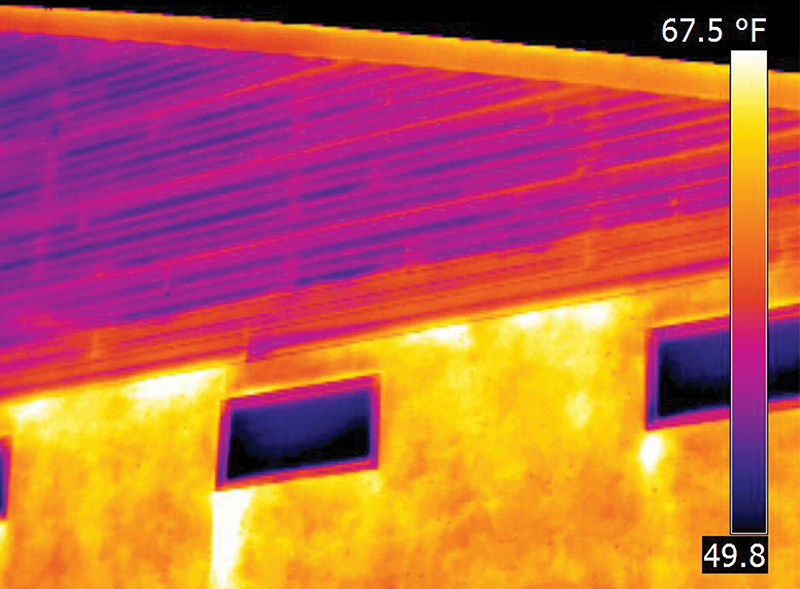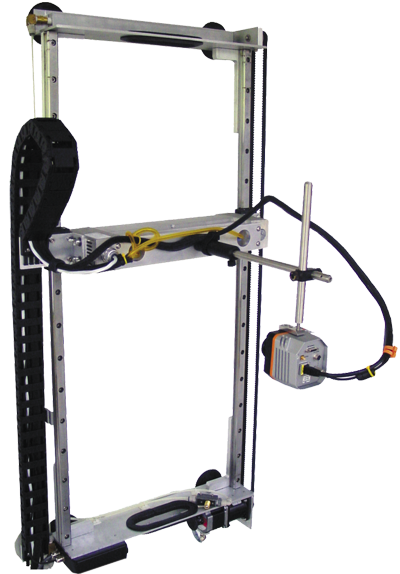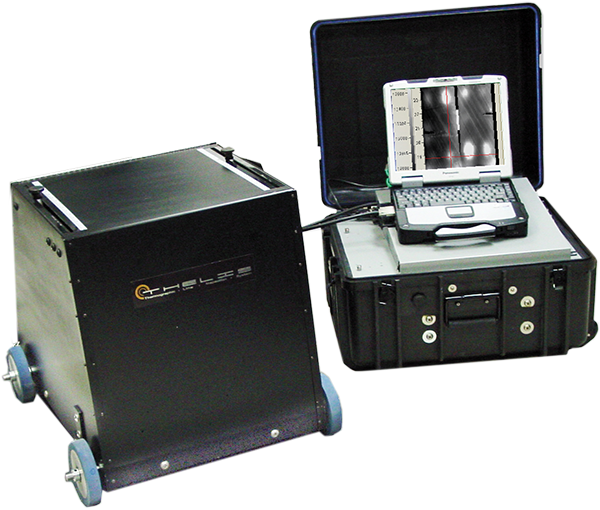
Camera Systems Rapidly Scan Large Structures
NASA Technology
Aging aircraft are an increasing concern at the national level. Commercial and government vehicles are being flown past their originally intended service life in order to save money, and fewer aircraft are being built to replace older vehicles. The Department of Defense, for example, is replacing its fleet at well below the rate required to maintain the present average age of its aircraft.
The answer, however, isn’t merely to build more aircraft. NASA’s Aircraft Aging and Durability (AAD) Project is taking a proactive approach to extending the life of aircraft even before age is a concern. Rather than focusing on old vehicles, the project targets young aircraft and develops technologies and materials to mitigate the effects of aging as early—and for as long—as possible.
Working with innovative materials means lots of testing, and, in the case of large structures like an aircraft wing, it means developing methods to scan components without taking them apart. Nondestructive testing (NDT) is the field of performing such analyses on materials without altering them permanently. While there are many ways to perform NDT, NASA has developed special methods for using thermography, or infrared imaging, to obtain the best results from scanning composite aircraft structures.
Thermography works by detecting infrared radiation emitted by objects—essentially, it measures how hot something is. While thermographic cameras can only see the surface of objects, the rate at which different parts of a surface emit heat can vary based on what lies beneath. For example, thermographic imaging can easily show water leaks behind normal-looking walls, because the water keeps an area of wall cooler than its surroundings. Similarly, defects throughout the material composing an aircraft wing can be exposed by measuring the heat given off along its surface.
Thermography can be passive or active. Passive thermography simply measures surface temperatures as they are. Active thermography involves applying or removing heat from a system or material and then observing how its temperatures change over time following the intervention.
Active thermography works best to reveal any hidden flaws on large structures, but it is difficult to capture high quality data quickly. The camera must be positioned to detect one part of the wing at a high resolution. Heat is applied, the subsequent temperature shifts are recorded, and then the camera is moved to repeat the whole process until a full picture can be stitched together.
To make this process more efficient, NASA developed line scanning thermography (LST). In LST, a moving device applies heat to the material’s surface in a thin line, while an infrared camera above moves in tandem with the heat source, capturing each part of the surface before, during, and after the application of heat. Elliott Cramer, head of the Nondestructive Evaluation Sciences Branch at Langley Research Center, says LST enabled the AAD project to rapidly inspect aircraft components and structures. The data from the scans could be processed using a NASA-created algorithm to determine disbonding of composite materials and any thickness changes caused by corrosion.
In the 1990s, NASA filed a patent on the system, with an emphasis on the algorithm for generating data from the measurements taken by the LST camera. “The technology has since been used by NASA for large-area inspections of both metallic and composite structures,” says Cramer.
Technology Transfer
After Cramer presented the technology at a technical conference in 1996, NASA was approached by ThermTech Services Inc., a company that specialized in inspecting boiler waterwall tubing at power stations. ThermTech licensed the technology in 1999 and developed equipment for applying the method to industrial applications, a commercial product featured in Spinoff 2003.
Before too long, the company’s work caught the eye of MISTRAS Group Inc., located in Princeton Junction, New Jersey. For 34 years, MISTRAS has specialized in nondestructive testing, both in performing such tests and in developing techniques to conduct them. The company established itself largely with acoustic emission and ultrasonic tests—using acoustic waves to probe the integrity of equipment—and in manufacturing the electronics associated with data acquisition and motion controlled scans.
Recently, MISTRAS decided to expand into thermography in order to broaden its capabilities. As Obdulia Ley, a senior research scientist at MISTRAS, explains, “Sometimes defects in a structure—for example, a composite—are easily and quickly detected after heat is deposited and allowed to diffuse within the structure. In some materials and structures, variations and defects can be easier to detect using thermal imaging rather than acoustic measurements.”
MISTRAS acquired ThermTech and has since applied LST in a variety of applications in power stations, manufacturing plants, and even in scanning large sections of ships constructed from composite materials.
Benefits
Ley says that LST has given MISTRAS the ability to handle large jobs that come with demanding time schedules. “A company might manufacture wind turbine blades,” she says, “and they have to provide a certain number of them in a short amount of time. But before they put the final coat of paint on the blade, the composite must be cured, tested, and repaired. There is a very small window of time to do all of that—especially if you find a flaw, since repairs take time.”
In the case of boilers in power stations, any unplanned downtime can quickly become expensive, as the electricity that the plant fails to generate while components are offline must be purchased instead. LST allows MISTRAS to scan large structures within planned downtime, minimizing the cost for power stations while still giving them an accurate picture of the health of their components. Typically, power stations set aside one week out of the year for testing and repairs, says Ley. “When we’ve done boiler inspections, they have to be done in 18–36 hours, and we’re talking about a 3–4 story building that requires scans all over.”
Using LST on aircraft, MISTRAS is also able to get a sense of how close an older vehicle is to structural failures. Says Ley, “We help our clients understand how the composites are aging and when they are not fit for service anymore. Doing these inspections allows them to avoid the high prices associated with catastrophic failures.”
Ley points out that NASA-developed technology plays a crucial role in making that assessment. “You might have an airplane that is 50 years old, and you still want to use it. In that case it’s critical to be sure that it can still perform. The LST system is fundamental to that effort.”

One of MISTRAS’s portable scanners that utilizes NASA’s LST system.

MISTRAS’s scanning cart can rapidly analyze a surface. Line scanning thermography (LST) technology allows it to take infrared measurements much faster than more traditional methods.

Infrared thermography reveals differences in temperature that can indicate flaws or damage in a material—in this case the white spots along this wall. Image courtesy of Paul Cox













